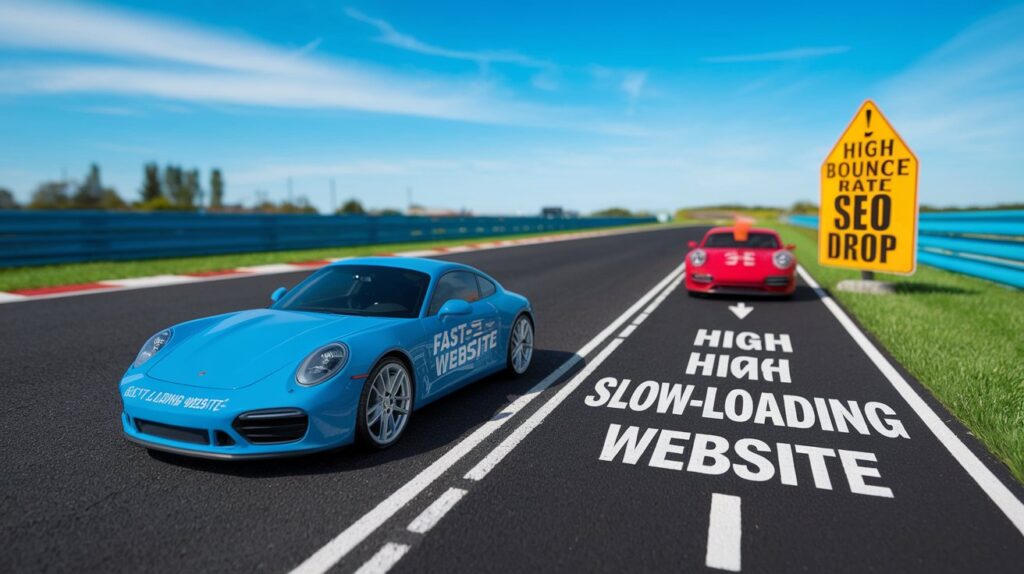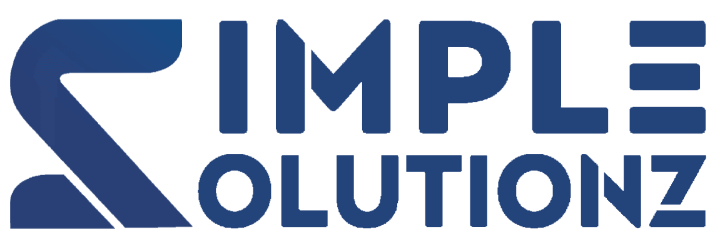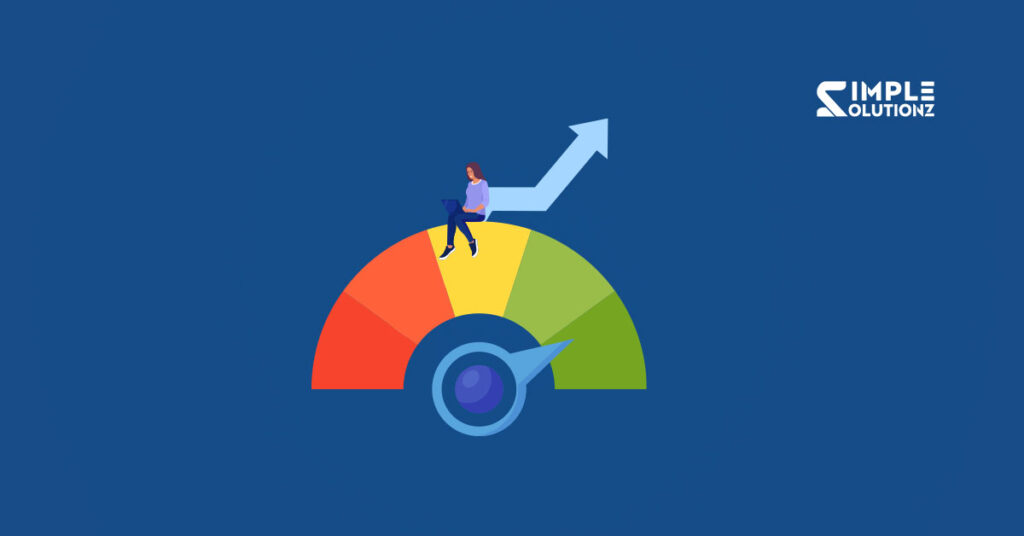Whether you run an e-commerce store, a business website, or a blog, website speed is important in user experience, search engine rankings, and conversion rates. Google considers page speed as a ranking factor, meaning a slow-loading site can negatively impact your search visibility and overall online success.
Studies show that 53% of visitors abandon a website if it takes more than 3 seconds to load, and even a 1-second delay can reduce conversions by 7%.
But what exactly slows down a website? How does page speed impact Google rankings? And most importantly, how can you optimize your site for faster load times? Let’s talk about it.
Contents
Why Website Speed Matters
👉 First Impressions Count
A slow website creates a poor first impression. Studies show that visitors expect a page to load in under 3 seconds. If your site takes longer, users are likely to leave, increasing bounce rates and reducing engagement.
👉 User Experience (UX) and Engagement
Faster websites provide a smoother and more enjoyable experience. Slow-loading pages frustrate users, leading to lower engagement, shorter session durations, and fewer conversions.
👉 SEO and Google’s Ranking Algorithm
Google explicitly states that page speed is a ranking factor, especially for mobile searches. Websites that load faster tend to rank higher in search engine results pages (SERPs), leading to better visibility and more traffic.
👉 Mobile-First Indexing
With Google’s mobile-first indexing approach, the performance of your website on mobile devices is more important than ever. Since mobile users often rely on slower connections, having a fast site is critical to maintaining high rankings.
👉 Conversions and Revenue Impact
Speed directly impacts revenue. Amazon found that a 1-second delay in page load time could cost $1.6 billion in lost sales annually. For e-commerce and business websites, speed optimization is essential for maximizing profits.
How Website Speed Affects Google Rankings
1. Google’s Core Web Vitals
In 2021, Google introduced Core Web Vitals, a performance metrics that directly influence a website’s ranking. These metrics assess how fast and stable a webpage is for users. Core Web Vitals consist of:
Largest Contentful Paint (LCP): Measures how quickly the main content loads (ideal: under 2.5 seconds).
First Input Delay (FID): Measures interactivity and responsiveness (ideal: under 100ms).
Cumulative Layout Shift (CLS): Measures visual stability to prevent elements from shifting unexpectedly (ideal: under 0.1).
Websites that meet these criteria rank higher in search results. If a page has poor Core Web Vitals, Google may deprioritize it in favor of faster, more optimized pages.
2. Bounce Rates and User Engagement
Google considers bounce rate (the percentage of visitors who leave a website after viewing only one page) an indirect ranking factor. A slow-loading website increases bounce rates because users lose patience and leave before the content loads.
Statistics on Page Load Speed and Bounce Rates:
- A 1-second delay in page load time can reduce conversions by 7%.
- 53% of mobile users leave a page if it takes longer than 3 seconds to load.
- A page that loads in 1 second has a bounce rate of 7%, while a page that loads in 5 seconds has a 38% bounce rate.
When users leave without interacting, it sends negative signals to Google, indicating that the content is not useful or engaging. As a result, slow websites may experience a decline in rankings.
3. Bounce Rates and Dwell Time
Dwell time refers to how long a visitor stays on your site after clicking a search result. Google considers this a ranking signal—if users spend more time engaging with your content, Google assumes the page is valuable.
When a site loads quickly, visitors are more likely to:
- Read more content
- Click on internal links
- Interact with the website
A slow website, on the other hand, discourages users from staying longer, decreasing dwell time and negatively impacting rankings.
4. Crawl Budget and Indexing
Google uses a crawl budget to determine how many pages of a website it will crawl and index within a given timeframe. A slow website consumes more of this budget because it takes longer for Googlebot to load pages.
How a Slow Website Affects Crawl Budget:
- Googlebot spends more time waiting for pages to load instead of discovering new pages.
- Important pages may not get indexed, reducing visibility in search results.
- Google may prioritize other websites that load faster, causing slower sites to rank lower.
5. Mobile-First Indexing and Page Speed
Since mobile-first indexing became Google’s default, page speed on mobile devices has become even more critical. Google evaluates the mobile version of a website before ranking it in search results.
Why Mobile Page Speed Matters:
- Over 60% of Google searches now happen on mobile devices.
- Mobile users expect fast load times—a slow site leads to frustration and exits.
- Google favors mobile-optimized, fast-loading pages in its rankings.
A site that performs well on desktops but loads slowly on mobile will struggle to rank. Optimizing mobile speed is essential for SEO success.
6. Page Experience Update
Google’s Page Experience Update prioritizes websites that offer a smooth, fast, and engaging user experience. The update includes:
- Core Web Vitals (LCP, FID, CLS)
- Mobile friendliness
- HTTPS security
- Intrusive interstitials (avoiding pop-ups that disrupt UX)
Since page speed is a crucial part of Page Experience, slow websites may struggle to rank well, even if they have high-quality content.
7. Competitive Advantage: Faster Sites Win
SEO is highly competitive, and page speed can be the difference between ranking #1 or #10. Websites with similar content and backlinks often compete for top positions, but the faster site usually wins.
Google’s algorithm rewards fast websites because they:
- Improve user satisfaction
- Keep visitors engaged
- Convert more leads and customers

Factors That Slow Down Your Website
👉 Unoptimized Images
Why It Slows Down Your Site
Large, high-resolution images increase page size, leading to longer loading times. If images are not compressed or properly formatted, they take up excessive bandwidth, slowing down your site.
👉 Too Many HTTP Requests
Why It Slows Down Your Site:
Every time a user loads a webpage, their browser requests files from the server, including images, CSS, JavaScript, and fonts. If there are too many requests, loading time increases.
👉 Lack of Browser Caching
Why It Slows Down Your Site
Without caching, a browser must download all elements (images, scripts, stylesheets) every time a user visits the page, instead of storing them locally.
👉 Poor Server Performance and Slow Hosting
Why It Slows Down Your Site
Your website’s server response time (TTFB – Time to First Byte) depends on your hosting provider. Shared hosting with limited resources can slow down your website significantly.
👉 Excessive Use of JavaScript and CSS
Why It Slows Down Your Site
Too many JavaScript and CSS files increase page load time. External scripts like animations, pop-ups, and tracking codes can block rendering and delay content loading.
👉 No Use of Content Delivery Network (CDN)
Why It Slows Down Your Site
If your website is hosted on a single server, users far from that server experience slower load times. A Content Delivery Network (CDN) distributes your site’s content across multiple global servers for faster access.
👉 Too Many Plugins and Third-Party Scripts
Why It Slows Down Your Site
Each plugin or third-party script (chat widgets, social media feeds, tracking codes) adds extra HTTP requests and server load, reducing speed.
👉 Render-Blocking Resources
Why It Slows Down Your Site
Certain CSS and JavaScript files block rendering, meaning they must load before the webpage is displayed. This delays content visibility, frustrating users.
👉 Large or Unoptimized Database
Why It Slows Down Your Site
A cluttered database with unnecessary data (old revisions, spam comments, expired cache) increases query time, slowing down your website.
👉 Slow or Unoptimized Web Fonts
Why It Slows Down Your Site
Custom web fonts add extra HTTP requests and can take longer to load, especially if multiple font weights and styles are used.
👉 Excessive Redirects and Broken Links
Why It Slows Down Your Site:
Too many redirects (e.g., 301, 302, meta refreshes) force browsers to make additional HTTP requests, increasing load time. Broken links also create unnecessary delays.
👉 Heavy Use of Ads
Why It Slows Down Your Site
Ad scripts, especially from Google AdSense, banner ads, and pop-ups, require additional requests, increasing page load time.
How to Improve Website Speed for Higher Rankings
1. Optimize Images
- Use next-gen image formats like WebP.
- Compress images using tools like TinyPNG or ImageOptim.
- Implement lazy loading for images to load only when visible.
2. Minimize HTTP Requests
- Reduce the number of elements on a page.
- Combine CSS and JavaScript files to reduce requests.
- Use inline CSS for small styles.
3. Use Asynchronous and Deferred Loading
- Load JavaScript asynchronously to prevent it from blocking rendering.
- Defer non-critical JavaScript files.
4. Optimize Web Hosting
- Choose a high-performance hosting provider.
- Consider using cloud hosting or dedicated servers.
5. Enable Browser Caching
- Store static assets like images, stylesheets, and scripts in cache.
- Use caching plugins like WP Rocket (for WordPress users).
6. Implement a Content Delivery Network (CDN)
- Use services like Cloudflare or AWS CloudFront to distribute content across global servers.
- Reduces latency and speeds up content delivery.
7. Reduce Redirects
- Eliminate unnecessary redirects.
- Ensure correct URL structures to avoid chain redirects.
8. Use Gzip Compression
- Enable Gzip or Brotli compression to reduce file sizes and speed up downloads.
9. Improve Server Response Time
- Optimize database queries.
- Use faster database engines.
- Remove unnecessary scripts and plugins.
Speed is the Key to SEO Success
Website speed is not just a technical issue; it’s a powerful weapon for improving search rankings, enhancing user experience, and increasing conversions. In an era where digital attention spans are shrinking, a slow website can cost you traffic, customers, and revenue.
By implementing speed optimization techniques—such as image compression, caching, reducing redirects, and using a CDN—you can significantly boost your site’s performance and stay ahead in Google’s search rankings.
Don’t wait until your slow website hurts your business. Start optimizing your website speed today and watch your SEO rankings soar!

